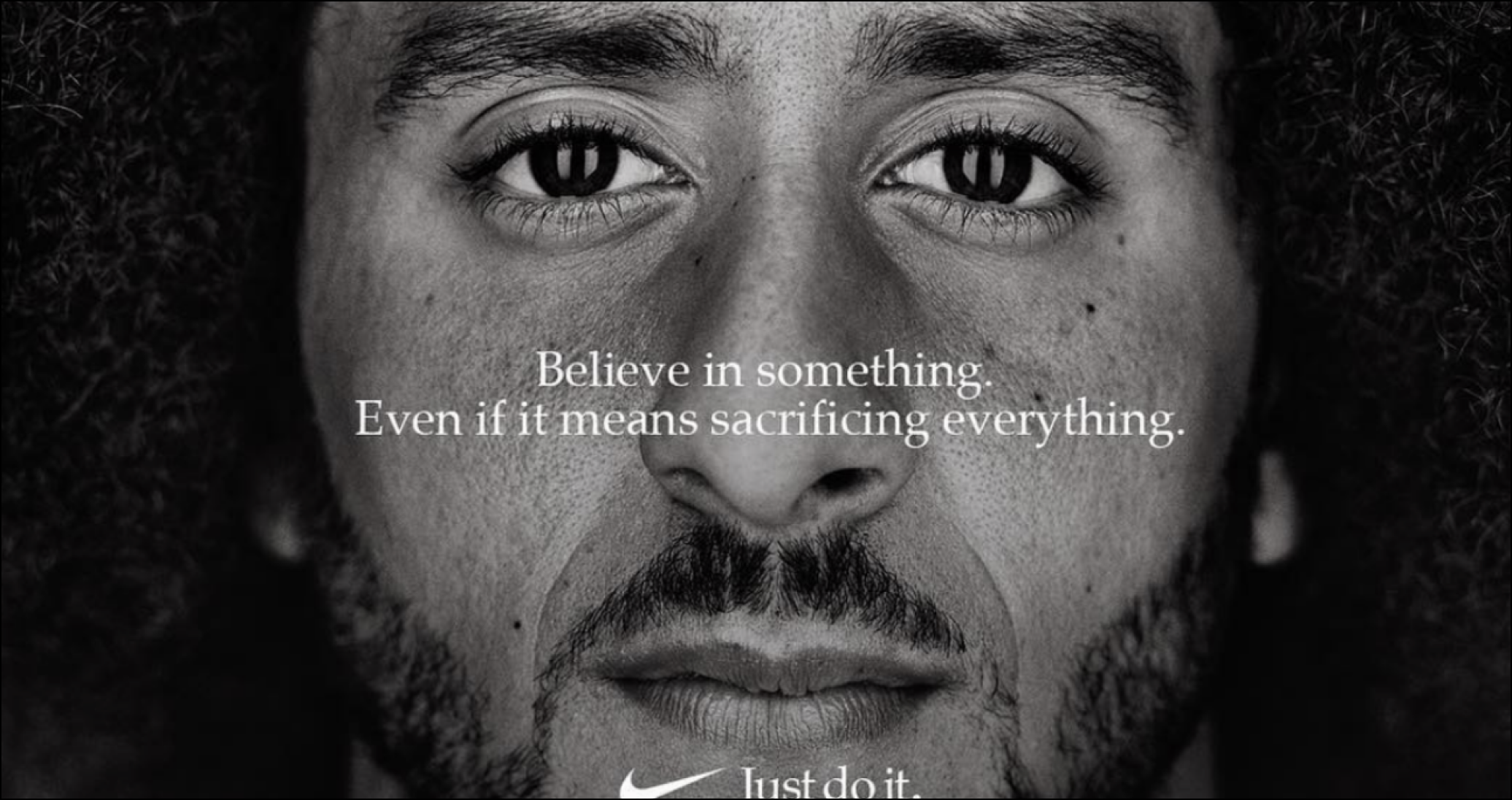In 2016, Colin Kaepernick, American NFL player, chose to kneel – rather than stand – during the pre-game Star-Spangled Banner, as a form of peaceful protest against racial injustice in the United States. His decision attracted praise and criticism from around the world, including a tweet-flurry from Donald Trump. No team has signed him since, and his activism has continued.
In September 2018, Nike released an ad for their 30th anniversary: a black and white portrait of Kaepernick, and the words Believe in something. Even if it means sacrificing everything, followed by the iconic swoosh and Just do it tagline. And the world went crazy. Longtime Adidas and New Balance fans showed photos of their new Nike kit, whilst conversely photos and videos of the less impressed showed people burning, slicing and binning their socks, shoes and clothing. Happy or mad, Nike is trending worldwide – all thanks to the power of emotional engagement.
University of South Australia’s Ehrenberg Bass Institute for Marketing Science research has embarked on the largest ever investigations to determine how to create the perfect ad, working with Mars Inc, US-based MediaScience Labs and their own Cognitive Neuroscience Lab, using multiple medical, psychological and neuroscientific methods to quantify emotion and attention responses in the body and brain.
Their early insights include the following:
- Emotional content can grab and hold attention
- People seem to be more willing to watch enjoyable emotional content over and over, rather than skipping or avoiding the content in other ways
- Emotional content is generally processed more quickly than factual information
- Emotions help people to remember information
- 95% of purchasing decisions are made emotionally.
These insights are significant to creating content across all industries, as whilst rationality must underpin all emotion, just stating the facts – even if your product or service is the best – is not always enough to win over your audience, you must humanise your brand through an emotional experience relevant to your demographic. In fact, these insights may be even more significant for a brand providing products or services that may be technical or abstract, or don’t immediately engage the senses, as you want to create significant and positive emotional memories associated to your brand – which is more difficult for say, a business consultant service than a gourmet chocolate brand.
Keep in mind, we’re not just talking about the tearjerker, the relatable and the sad-turned-success story, engaging emotions can come with humour, intrigue, surprise and as Nike have just shown us, outrage. (Although, we don’t really recommend the latter unless you’ve really profiled and understood your demographic.)
On the other hand, achieving the perfect balance of emotive storytelling and brand messaging is essential to a campaign’s success. Think of the times you’ve engaged with a campaign, laughed or puzzled, only to go back and think… wait, what was that for?! Balancing the appropriate messaging and brand strategy with emotive storytelling will determine the effectiveness of the campaign – without emotion, there’s no connection to the audience, but without rational brand messaging, there’s no point in creating the campaign.
Our work for Our Watch’s youth organization The Line must always achieve a balance of authentic emotional storytelling and important key messaging through a direct engagement with real people telling real stories in their own words. The Asking For A Mate webseries campaign focuses on dispelling stigma and myths around sex, gender and relationships for young people, with a wider scope of preventing violence against women through education. Whilst the content and messaging of the campaign is not disparate to what is taught by psychologists, and what should be taught in health classes and Safe Schools programs around the country, presented in this authentic and emotive manner, it engages the emotions of the viewers and allows a connection that’s more authentic, and more memorable than a teacher in class, a chapter in a textbook or an article online. As part of the process of making this content, it’s reviewed by a committee of young people to ensure that the language and style connects in the right way – unlike the infamous “milkshake consent” campaign commissioned by the Australia federal government.
Using emotive storytelling creates a bond between brand and audience, and allows messaging to be turned into memories. It gives a brand a personality beyond the promotion of its products; it gives your brand an influential voice in the hearts and minds of your demographic.

